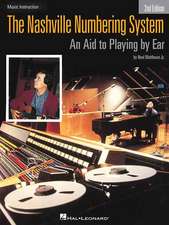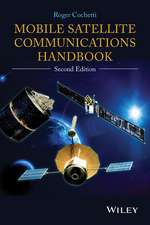Materials Modelling: From Theory to Technology
Autor Englishen Limba Engleză Hardback – iul 1992
The volume explores subjects that have implications in a wide range of technologies, focusing on how basic research can be applied to real problems in science and engineering. Linking theory and technology, the book progresses from the theoretical background to current and future practical applications of modeling. Accessible to a diverse audience, it requires little specialist knowledge beyond a physics degree. The book is useful reading for postgraduates and researchers in condensed matter, nuclear engineering, and physical metallurgy, in addition to workers in R&D laboratories and the high technology industry.
| Toate formatele și edițiile | Preț | Express |
|---|---|---|
| Paperback (1) | 278.13 lei 6-8 săpt. | |
| CRC Press – 19 sep 2019 | 278.13 lei 6-8 săpt. | |
| Hardback (1) | 783.25 lei 6-8 săpt. | |
| CRC Press – iul 1992 | 783.25 lei 6-8 săpt. |
Preț: 783.25 lei
Preț vechi: 955.17 lei
-18% Nou
Puncte Express: 1175
Preț estimativ în valută:
149.89€ • 155.91$ • 123.75£
149.89€ • 155.91$ • 123.75£
Carte tipărită la comandă
Livrare economică 14-28 aprilie
Preluare comenzi: 021 569.72.76
Specificații
ISBN-13: 9780750301961
ISBN-10: 0750301961
Pagini: 240
Dimensiuni: 156 x 234 x 17 mm
Greutate: 0.48 kg
Ediția:1
Editura: CRC Press
Colecția CRC Press
ISBN-10: 0750301961
Pagini: 240
Dimensiuni: 156 x 234 x 17 mm
Greutate: 0.48 kg
Ediția:1
Editura: CRC Press
Colecția CRC Press
Public țintă
ProfessionalCuprins
Theory and observation of crystal defects; Radiation damage in materials; Modelling fracture; Sensors and electronic behaviour; Subject index; Author index.
Descriere
This volume explores subjects that have implications in a wide range of technologies, focusing on how basic research can be applied to real problems in science and engineering. Linking theory and technology, the book progresses from the theoretical background to current and future practical applications of modeling. Accessible to a diverse audience, it requires little specialist knowledge beyond a physics degree. The book is useful reading for postgraduates and researchers in condensed matter, nuclear engineering, and physical metallurgy, in addition to workers in R&D laboratories and the high technology industry.









